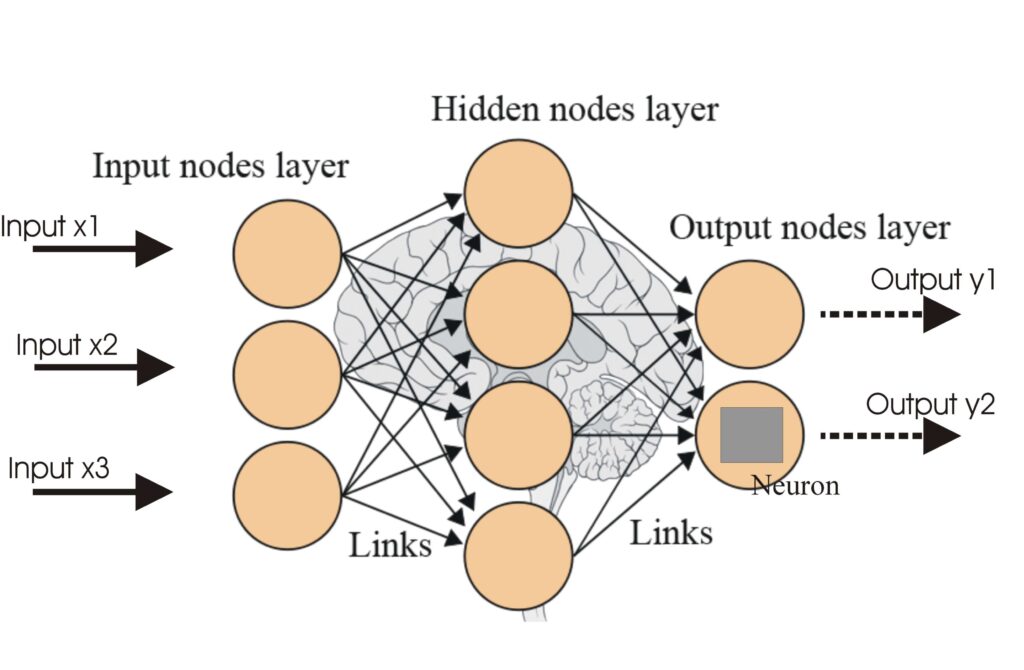
Neural Networks
A neural network, or artificial neural network (ANN), is a computational model inspired by the human brain, essential in AI and machine learning for tasks like ...

Deep Learning is a subset of machine learning in artificial intelligence (AI) that mimics the workings of the human brain in processing data and creating patterns for use in decision making. It is inspired by the structure and function of the brain called artificial neural networks. Deep Learning algorithms analyze and interpret intricate data relationships, enabling tasks like speech recognition, image classification, and complex problem-solving with high accuracy.
Deep Learning is a subset of machine learning in artificial intelligence (AI) that mimics the workings of the human brain in processing data and creating patterns for use in decision making. It is inspired by the structure and function of the brain called artificial neural networks. Deep Learning algorithms are designed to analyze and interpret intricate data relationships, enabling machines to perform tasks like speech recognition, image classification, and complex problem-solving with high accuracy.
At its core, Deep Learning involves training artificial neural networks and discover their role in AI. Learn about types, training, and applications across various industries.") with multiple layers (hence “deep”) to learn representations of data with increasing levels of abstraction. Each layer in the network extracts features from the data, passing the information to the next layer, which processes it further. This hierarchical structure allows the model to learn intricate patterns and relationships within the data, making it particularly powerful for tasks involving unstructured data such as text, images, and sound.
Deep Learning is transforming various industries by enabling advanced capabilities such as:
Deep Learning models are typically trained using large datasets and powerful computational resources. The training process involves feeding data into the model, which then adjusts its internal parameters to minimize the error in its predictions. This iterative process, known as backpropagation, allows the model to learn from its mistakes and improve over time.
The potential of Deep Learning is vast and continues to grow as technology advances. Future developments are expected to enhance the efficiency and capabilities of neural networks, enabling even more sophisticated applications and deeper insights from data. As Deep Learning evolves, it will further push the boundaries of artificial intelligence, leading to more intelligent and autonomous systems that can revolutionize industries and improve our daily lives.
Deep Learning is a subset of machine learning inspired by the human brain’s neural networks. It enables machines to autonomously learn from large volumes of data, recognize patterns, and make decisions with high accuracy.
Key characteristics include hierarchical learning, autonomous feature extraction, scalability to large datasets, and the use of neural networks which simulate the brain’s processing of information.
Deep Learning is used in computer vision, natural language processing, healthcare (such as disease diagnosis and treatment prediction), finance (fraud detection, algorithmic trading), and autonomous vehicles.
Deep Learning models are trained on large datasets using neural networks with multiple layers. They learn by adjusting internal parameters through iterative processes like backpropagation to minimize prediction errors.
As technology advances, Deep Learning is expected to become even more powerful and efficient, enabling more sophisticated AI applications and revolutionizing industries through deeper data insights and autonomous systems.
Smart Chatbots and AI tools under one roof. Connect intuitive blocks to turn your ideas into automated Flows with FlowHunt.
A neural network, or artificial neural network (ANN), is a computational model inspired by the human brain, essential in AI and machine learning for tasks like ...
A Deep Belief Network (DBN) is a sophisticated generative model utilizing deep architectures and Restricted Boltzmann Machines (RBMs) to learn hierarchical data...
Artificial Neural Networks (ANNs) are a subset of machine learning algorithms modeled after the human brain. These computational models consist of interconnecte...
Cookie Consent
We use cookies to enhance your browsing experience and analyze our traffic. See our privacy policy.
